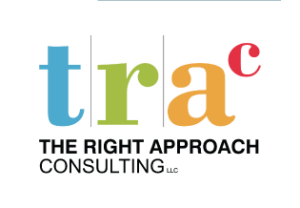Internal Audit Key to Driving Improvement (Pt. 2)
Audit Staff
Once the audit plan has been formulated, the audit staff can begin to be developed and trained. Cross-functional members can be drawn from the pool of managers, supervisors, and line positions within the company. The auditors need not be totally familiar with the procedures they will be assigned, and in fact the system actually works best if they are not. People tend to overlook inconsistencies when they are overly familiar with a process, the old “fresh set of eyes” maxim. One of the most critical, albeit difficult, skills to develop in an audit staff is to “see things as the customer sees them”. Mechanically going through an audit checklist provides little value-add, but the ability to represent a paying customer’s viewpoint is priceless. When assigning audit responsibility be sure to avoid conflict of interest auditing. In other words, never assign an auditor to a process that he/she has ultimate responsibility for. Under the Continuous Improvement umbrella, the purpose of a robust audit program is to discover findings and inconsistencies within the system, and to correct them. Posting superfluous audit results that never uncover any problems will throw up red flags with any customer/auditor, in addition to providing zero value to the quality system.
Collateral Benefits
One of the invaluable peripheral benefits of a robust audit program is the opportunity it presents to train the workforce to be more “auditor friendly”. In a typical shop workforce, the average employee is not comfortable interfacing directly with customers and/or auditors. Anxiety can temporarily turn even the most highly trained employee into a blubbering new hire while being questioned by a stranger. This can be overcome by practice, practice, & more practice via internal audits. During ISO Rallies or training sessions, “coach” employees on the proper way to respond to an auditor’s questioning, much the way a trial attorney will review testimony with a witness. This is not cheating, but simply “applied learning”. The more employees are exposed, and participate in, audits, the more comfortable they will become with the process. Interacting smoothly with a customer or auditor is a learned behavior, one that can be developed through the internal audit program. The results can be truly remarkable!
most highly trained employee into a blubbering new hire while being questioned by a stranger. This can be overcome by practice, practice, & more practice via internal audits. During ISO Rallies or training sessions, “coach” employees on the proper way to respond to an auditor’s questioning, much the way a trial attorney will review testimony with a witness. This is not cheating, but simply “applied learning”. The more employees are exposed, and participate in, audits, the more comfortable they will become with the process. Interacting smoothly with a customer or auditor is a learned behavior, one that can be developed through the internal audit program. The results can be truly remarkable!
Frequency
A complete audit cycle of all Functional and ISO System processes should be completed every six-months. This is to calibrate with the six-month registrar surveillance audits required to maintain ISO registration. While the timing of customer audits cannot be controlled, it is highly recommended by the author to complete the audit cycle prior to each ISO surveillance audit. This provides an opportunity to clean-up most inconsistencies uncovered during audits, while minimizing the potential of a customer/auditor finding. Any audit findings should be integrated into the internal corrective action system. Along with the administrative benefits of doing this (tracking, follow-up, accountability), it also feeds into the management review process as part of the quality report. Follow-up audits for finding should be completed in a timely manner, typically within a maximum 10-day time frame.
The success of an audit program hinges on the quality and personality of the process owner. Their ability to develop a trained staff that can effectively audit processes while developing employee confidence in dealing with customers will lead to operational excellence.
